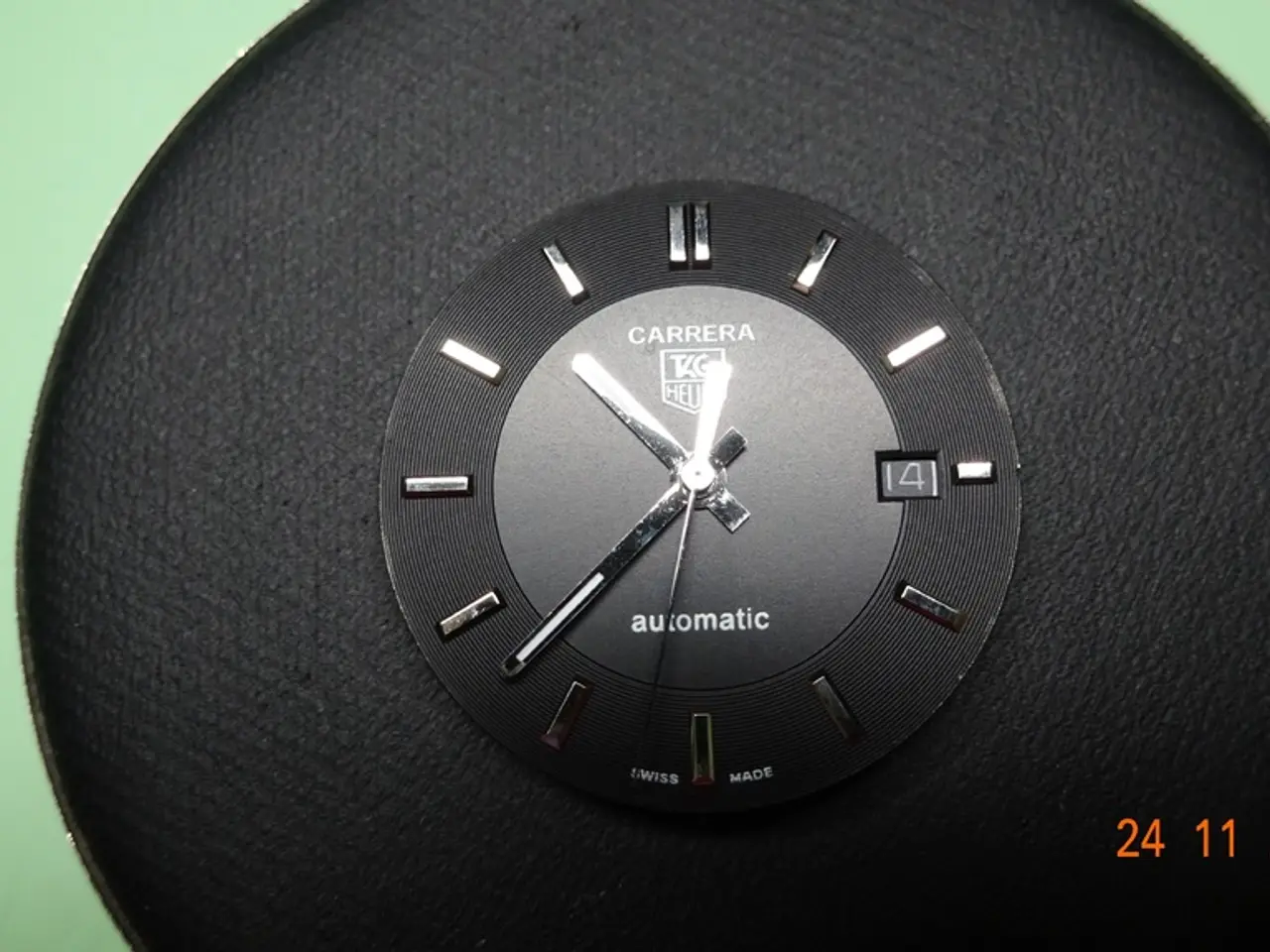Annual Competition: Shadow Clock at One Hertz in 2025
=================================================================================
In the realm of innovative timekeeping devices, a self-built project known as the shadow clock stands out. This unique piece, referred to as a "shadow clock," is a testament to the fusion of technology and aesthetics.
The shadow clock is built around an ESP8266 microcontroller, a DS3231 real-time clock module, and WS2812B LEDs. The ESP8266 microcontroller serves as the heart of the device, connecting to Wi-Fi and fetching the current time from an NTP server. It also manages the LED control and reads inputs from IR distance sensors.
The DS3231 RTC module, on the other hand, ensures accurate timekeeping for the shadow clock, acting as a backup when the network is unavailable. The time is displayed through a ring of 60 WS2812B individually addressable LEDs, each LED corresponding to one minute on a clock face. The current hour is indicated by lighting the corresponding LED red, minutes in blue, and seconds in white.
The activation and display control of the shadow clock come from IR distance sensors that detect proximity. When a hand or finger is placed near the clock, the sensors trigger the LEDs to display the time. Without detection, the clock remains as a simple decorative round device that shows colorful animations instead of the time. This method of activation, referred to as “shadow play,” makes it a “shadow clock,” where gestures or shadows near the sensors cause the time display to appear dynamically.
The shadow clock is designed for easy reading, unlike conventional clocks, and serves both as a practical timepiece and an aesthetic piece of decor. When not activated, the shadow clock shows colorful animations, adding an element of visual interest to any space. The use of LEDs in this clock build is noted as innovative, making it a unique and esoteric time-telling device.
In summary, the build and activation workflow of the shadow clock is as follows:
- ESP8266 microcontroller: Connects to Wi-Fi, fetches NTP time, manages LED control, and reads IR sensor inputs.
- DS3231 RTC module: Keeps accurate time locally when Wi-Fi is unavailable.
- WS2812B LED ring: Displays time with color-coded LEDs (hour-red, minutes-blue, seconds-white).
- IR distance sensors: Detect presence of a hand/finger near the clock, activating the LED time display.
- When no object is detected near the IR sensors, the device shows colorful animations instead of the time.
This creates an elegant, interactive clock with a minimalist design that is both practical and visually appealing.
[1] Link to the original project [2] Link to the project's GitHub repository
- The integration of the IR distance sensors in the shadow clock project enables smart-home-devices and gadgets to activate the clock's time display, transforming it into an interactive piece of the smart-home technology.
- The shadow clock, while primarily showcasing technology with its unique LED design and microcontroller setup, also offers an aesthetic appeal, serving as a blend of sensors, smart-home-devices, and gadgets with art and design.




